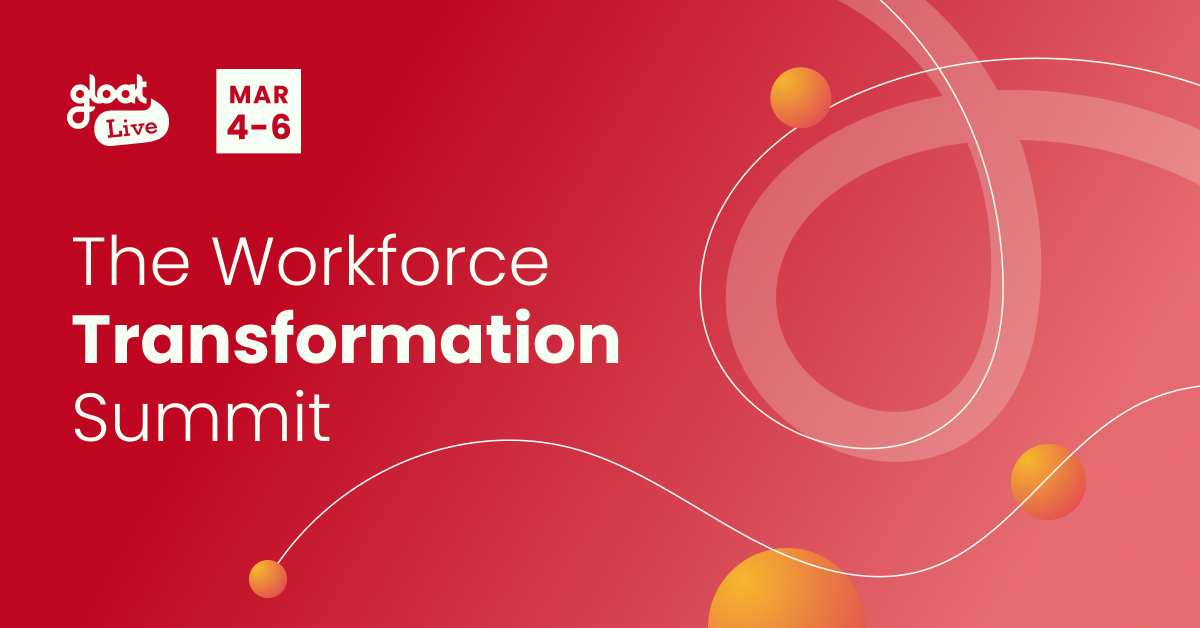February research round-up
What I am reading, listening to, and thinking about in the world of talent marketplaces

In my first research round-up of 2022, I shared that reimagination would be one of 2022’s biggest themes. This month, I want to start shifting our mindsets and mental models beyond adaptation and resilience—especially as we begin to look beyond the challenges of responding to COVID-19. I believe that the businesses that shift to proactive and forward-looking strategies in 2022 will become leaders in our next chapter.
But shifting gears to a reimagination mindset is hard and unfamiliar. How do we get started? What needs to change? Which mindset shifts will set us up for success, and which will fall flat? Given the opportunity, and challenges ahead, it’s helpful for leaders to be looking for inspiration and insights to guide what’s next. This month’s research roundup aims to provide some of this inspiration by curating the podcasts and articles which have expanded my thinking over the past month.
Perhaps most critical to the reimagination mindset is exploring new perspectives and ideas—taking a fresh look at what’s ahead. It’s about rethinking how work is structured, changing how talent is accessed and deployed, and identifying growth and progression as the core motivators that drive all of us to achieve our best. Since these are major transitions, this month’s research roundup is dedicated to showcasing some of the bold ideas we need to embrace in order to pave the way for transformations that are just as bold.
Here are some of the lessons, breakthroughs, and discoveries to keep in mind when you start thinking about what reimagining work will mean for your business.
READ: What’s new in thought leadership about the future of work
Managers Can’t Do It All, Harvard Business Review, by Diane Gerson and Linda Gratton
We can’t talk about reimaging work without reexamining the role of the manager and how it is changing, which is the focus of Diane Gerson and Lynda Gratton’s article in Harvard Business Review. The article suggests that modern-day managers have a very different job since work is no longer siloed, hierarchical, and rooted in physical spaces. So how must businesses evolve accordingly? The piece highlights what three companies are doing to upgrade their training programs and empower a new generation of managers. In a world where work is disrupted, management and leadership need to be disrupted as well.
A call to action: Provide employees with room to grow, McKinsey, by Emily Field, Bryan Hancock, Stephanie Smallets, and Jason Williamson
Now that it’s clear that the battle for talent is further intensifying in 2022, many leaders are desperately searching for strategies that will safeguard their organizations from the worst of the turnover tsunami. New research from McKinsey points to internal mobility and talent marketplaces as one of the essential solutions. A recent blog reveals that turnover is significantly less likely when employees have access to growth opportunities within their organization. The piece also points to “tech solutions [that] enable your internal job marketplace” as one of the next steps that leaders should take to retain their people.
Why Are Employees Really Quitting? You Can Boil it Down to 2 Simple Reasons, Inc., by Marcel Schwantes
Looking for even more proof that internal mobility moves the needle? Check out Marcel Schwantes’s latest Inc. piece, which breaks down what’s driving the Great Resignation into a few key factors. He also pinpoints three steps that leaders must take to democratize access to opportunities, including dismantling barriers to internal growth, communicating company values, and stepping up diversity, equity, inclusion, and belonging (DEIB) efforts.
The Next In-Demand Job Title is Head of the Future of Work, Forbes, by Jena McGregor
As the way we work changes, the roles that are crucial are going to evolve to keep pace. And according to Forbes Editor Jena McGregor, Head of the Future of Work is a title that is primed to step into the spotlight. The article also provides a sneak peek into what this position might look like, based on someone who already holds the coveted title: Patrick Hull, VP of Future of Work at Unilever. It’s an added bonus when members of our Gloat community get recognized for the cutting-edge work that they’re doing!
Why Your High Performing Employees May Slowly Be Disengaging From Work, Fast Company, by Whitney Johnson
While it’s disheartening whenever an employee disengages with their work, it’s particularly troubling when it’s a worker that you rely on. And although it might feel like a rarity, high-performers aren’t immune to engagement slumps. In fact, they may be particularly at risk, as Whitney Johnson explains in Fast Company. She uses an S curve to describe employee growth, noting that there’s often an initial learning curve, followed by the steep back of the S when employees hit their stride and performance and productivity skyrocket. The trouble comes when they reach that final stage, mastery, at the end of the S. The antidote? Ensuring that these top performers are continuously challenged so they never become bored and start shifting into autopilot.
LISTEN: What I’ve been playing on repeat
Checks and Balance: The workforce is strong, The Economist Podcast, with John Prideaux and Jon Fasman
If you’re looking for a deep dive into the employee-employer relationship and how it’s evolving, this podcast episode is required listening. Over the course of 42 minutes, listeners are taken back in history to revisit a turning point in the American workforce, brought into the present day with an interview with a group of Starbucks employees who are trying to unionize, and even given a preview into the future when MIT professor Daron Acemoglu explains what could happen if robots make up a shortfall in the labor market. Brilliant.
THINK: What research and studies are saying about our path forward
Can’t Fill Jobs? Deconstruct Them, MIT Sloan Management Review, by Ravin Jesuthasan and John Boudreau
If there’s a role that your organization is struggling to fill, you’re not alone. As turnover surges and demand for talent increases, some businesses are getting creative to fill vacancies, and they’re reaping impressive results. Future of work experts John Boudreau and Ravin Jesuthasan explore the top challenges that employers are facing today and the mindset shifts that will help solve them. And if you like what you’re reading, you’re in luck; Jesusthasan and Boudreau are the authors of Work Without Jobs: How to Reboot Your Organization’s Work Operating System, which is now available for pre-order.
COVID-19 Pandemic Continues to Reshape Work in America, Pew Research Center, by Kim Parker, Juliana Menasce Horowitz, and Rachel Minkin
Even as we begin cautiously looking towards a world that isn’t dominated by the pandemic, COVID-19 promises to have a long-lasting impact on the way we work. This new report from Pew Research Center explores employees’ sentiments about remote working. Most notably, teleworkers are largely choosing to continue working from home, even as workplaces reopen and fears about COVID-19 exposure decline. Pew’s research is essential to understand the data and sentiments behind the future of workforce headlines.
67% Would Quit if Offered No Internal Mobility, Hubble Solutions, by Allie Narwat
As we reimagine work, we can all benefit from more data and insights to help us carve a path forward. Look no further than this post from Allie Narwat at Unleash, which shares some of the most interesting statistics about the Great Resignation. Key findings include research from Lever that reveals that 41% of employees are planning to ask for a role change in 2022 and that 13% would even take a pay cut to make the switch. Also of note? Two-thirds of workers told Lever that they would quit altogether if their employer did not allow for internal mobility.
ICYMI: What I keep coming back to
From ‘the Great Resignation’ to ‘the Great Reimagination’, Wall Street Journal Deloitte Insights, by Anne Field
This Wall Street Journal article from Deloitte pinpoints four key shifts that leaders should embrace if they want to set their organizations up for success in the new world of work. While each point will be crucial, the transition from jobs to skills is arguably most important. Anne Field explains that looking at skills and adjacent skills, rather than academic degrees and past experiences, will be a game-changer for expanding your candidate pool. She reports that 46% of high-performing organizations work to identify adjacent skills to inform reskilling programs, while only 26% of other organizations do.
CONNECT: What future-fit organizations and leaders are talking about
Launching Unlocked, our opportunity network, Linkedin, by Michael Fraccaro
Sometimes, the best inspiration for reinvention and reimagination comes from real-life success stories, which is why I am spotlighting this Linkedin article by Mastercard’s Chief People Officer, Michael Fraccaro. He discusses the launch of Unlocked, Mastercard’s opportunity network, which has been rolled out to all 21,000+ employees globally (and we’re proud to say is powered by Gloat). The piece explains how their talent marketplace will power more agile ways of working and democratize access to opportunities. Congratulations to the entire Mastercard team on this invaluable step forward!
Let us know what you would add to our list. What’s inspiring your thinking and challenging you to explore new directions as you reimagine your organization’s future in the 2020s?





